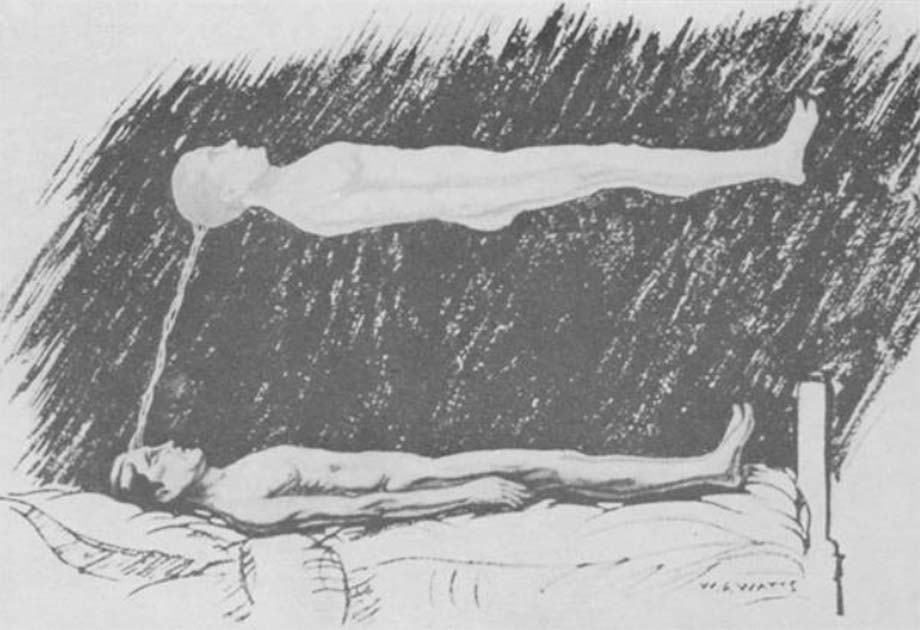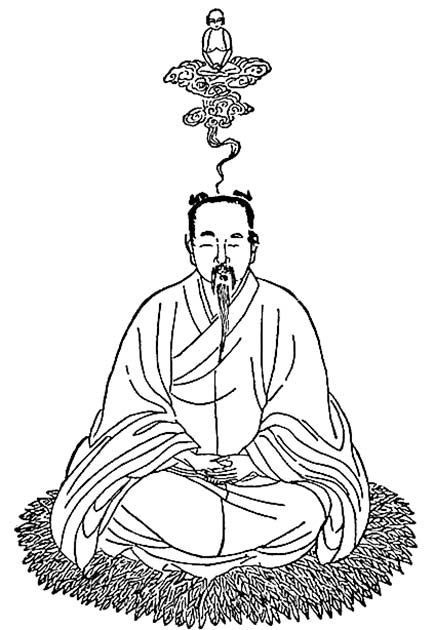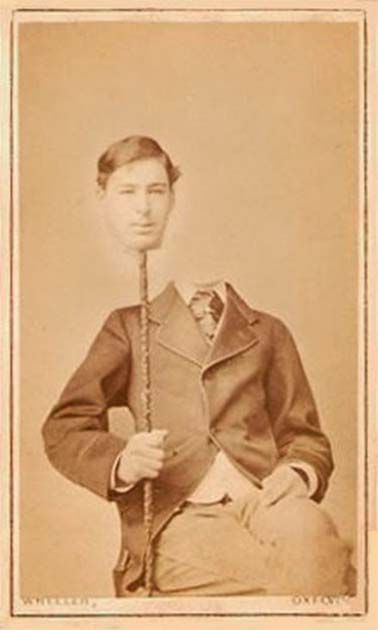We tend to think of the Victorians as being a little staid and boring. But the truth is they were into some pretty weird things. Things like astral projection.
Amid corsets and top hats, Victorians were entranced by the idea of exploring the cosmos while sipping their afternoon tea. This peculiar fascination with astral projection, the art of detaching one’s spirit from the earthly shackles, led to a surge of curiosity and speculation.
From séances to secret societies, this trend promised a mystical ticket to the unknown. But did it deliver or dissolve into mere illusion? Let’s delve into the strange waters of Victorian occultism, where the boundaries between reality and imagination are blurred like the tendrils of a mesmerizing Victorian fog.
Spirit Walking
For the Victorians astral projection, also known as “spirit walking”, was the ultimate mystical escape hatch. This otherworldly concept held that one’s consciousness could leave the confines of the physical body and venture into ethereal realms.
The possibilities were endless. It was seen as a fantastical voyage where one’s spirit could soar like an eagle through the cosmic tapestry of the universe. Enthusiasts believed it was possible to visit and traverse distant planets, converse with spirits, or witness events far removed from their immediate surroundings (aka spy on people).

This might seem appealing today but in the context of Victorian England where few could afford to leave their hometowns, let alone country, Astral projection was like a spiritual passport to destinations beyond the terrestrial, a sort of out-of-body odyssey that combined the intrigue of science fiction with the mystique of the arcane.
This curious pursuit fascinated minds both serious and curious, beckoning them to explore the metaphysical frontiers that lay beyond their corporeal existence. The Victorian era was one of discovery, and it felt like this was just another fascinating thing about the world to discover.
- The Montauk Project and the Outer Limits of US Classified Research
- Orchidelirium: The Victorian Madness For Orchids At Any Price
We might imagine today that the Victorians were relatively puritanical, straightlaced and unimaginative. But the Victorian era actually saw a curious alliance between spiritualists, mystics, and even some scientific minds who championed astral projection.
Influential figures like Helena Blavatsky, co-founder of the Theosophical Society, and Hereward Carrington, a renowned psychical researcher, lent their support to this strange endeavor. These proponents combined spiritual fervor with an air of scientific inquiry, striving to legitimize astral projection amidst a backdrop of societal curiosity.
Secret societies and séances also played a role, weaving a web of fascination around the concept. With spiritualists advocating direct communication with spirits and scientists toying with the notion of consciousness beyond the body, astral projection found itself at the intersection of mysticism and science, endorsed by a diverse array of thinkers.
Of course, not all this interest in astral projection, or the occult in general, was strictly legitimate. Various con artists and hoaxsters were attracted to the practice as well. People soon found ways to make money out of the trend, either by putting on shows or charging people to talk to their deceased loved ones.
Why Was it So Popular During the Victorian Era?
The Victorian fascination with astral projection was no accident. The era was a time of profound curiosity, marked by a thirst for exploration in all realms, from science to spirituality. Amid rapid industrialization and societal change, people sought solace in the mysterious and the unknown.
The concept of astral projection tapped into this yearning for escape and discovery, offering a tantalizing glimpse into a realm beyond the mundane. Additionally, as Victorian society grappled with conventional norms, astral projection provided a daring departure—a chance to defy physical limitations and traditional boundaries.
Its popularity also soared due to the era’s burgeoning interest in the supernatural, with literature, art, and public discourse embracing the mysterious and unexplainable. As such, astral projection became a captivating pastime that mirrored the era’s hunger for both knowledge and enchantment.

Sad to say there’s never been any hard evidence that astral projection is actually possible. As the Victorian era waned, skepticism began to cast its shadow over the once-glistening allure of astral projection. Skeptics and scientists started scrutinizing the claims, seeking evidence beyond anecdotal experiences.
The rise of psychological and physiological explanations for out-of-body experiences prompted doubts about the validity of astral projection. Pioneers like Frederic Myers, a psychical researcher, proposed alternative interpretations rooted in the mind’s intricacies. As the scientific method gained prominence, astral projection’s lack of empirical support led it to lose favor.
- The Cottingley Fairies: The Hoax that Tricked Arthur Conan Doyle
- The Amazing Criswell: an Anti-Psychic?
As the 20th century dawned, advancements in psychology and neurology further chipped away at its mystical façade. But that’s not to say it disappeared altogether. Some still held on to the idea of Astral Projection, including the United States government, amongst others.
The Cold War was a strange time during which both the United States and its allies and the Soviets would do anything to get ahead of each other. This included straying into the realms of fringe and paranormal science.
MKUltra is perhaps the most infamous of these projects. Scientists from the United States experimented on willing and unwilling subjects to try and unlock their psychic potential. What better tool for a clandestine agency is there than someone who can astral project? Spying anywhere in the world without a trace.
Another Craze from the Crazy Victorians
Whether or not any government actually made any headway with astral projection experiments is still a matter of debate. There’s little heard evidence of it, but plenty of people are still convinced.

Regardless, the Victorian Astral Projection Craze stands as a reminder that this was an era of boundless imagination and curiosity. It captured the hearts and minds of those who yearned for a touch of the magical amidst the tumultuous winds of change.
While astral projection may have faded from the limelight, its impact lingers. It embodies the intricate dance between science and mysticism, skepticism, and belief, which continues to shape our understanding of the unknown. Just because we haven’t proven something yet, doesn’t mean it can’t be proven.
Top Image: Schiavonetti’s Soul Leaving Body from 1808. This image was co-opted by researchers on astral projection to demonstrate how the mind leaves the body. Source: Luigi Schiavonetti / Public Domain.